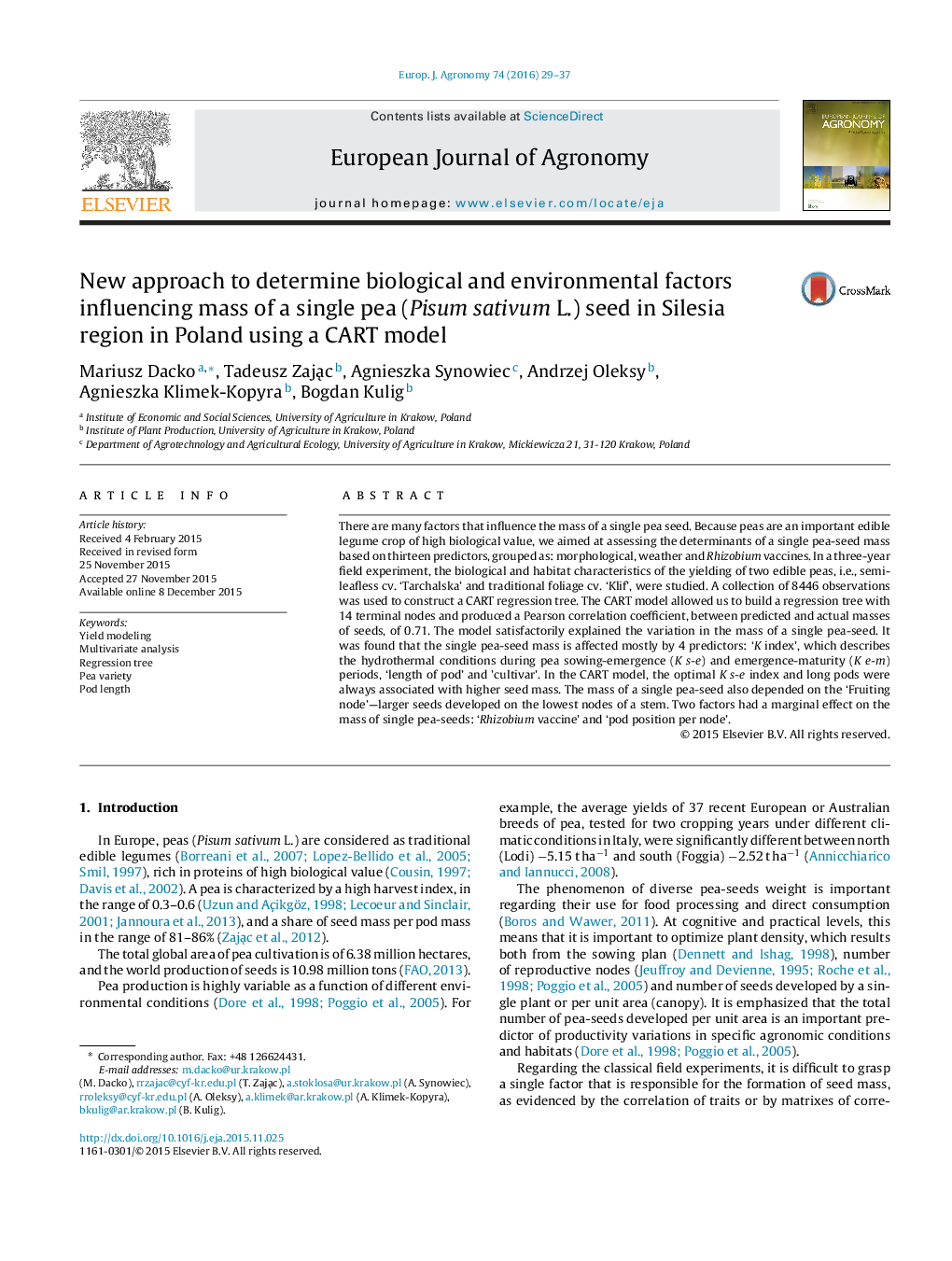| Article ID | Journal | Published Year | Pages | File Type |
|---|---|---|---|---|
| 4508777 | European Journal of Agronomy | 2016 | 9 Pages |
•CART models were used to assess factors influencing the mass of a single pea seed.•CART models satisfactorily described variation in a single mass of pea.•Hydrothermal index aptly determines impact of weather on the mass of a pea seed.•Cultivar and pod length are the other important factors of pea seed-mass formation.
There are many factors that influence the mass of a single pea seed. Because peas are an important edible legume crop of high biological value, we aimed at assessing the determinants of a single pea-seed mass based on thirteen predictors, grouped as: morphological, weather and Rhizobium vaccines. In a three-year field experiment, the biological and habitat characteristics of the yielding of two edible peas, i.e., semi-leafless cv. ‘Tarchalska’ and traditional foliage cv. ‘Klif’, were studied. A collection of 8446 observations was used to construct a CART regression tree. The CART model allowed us to build a regression tree with 14 terminal nodes and produced a Pearson correlation coefficient, between predicted and actual masses of seeds, of 0.71. The model satisfactorily explained the variation in the mass of a single pea-seed. It was found that the single pea-seed mass is affected mostly by 4 predictors: ‘K index’, which describes the hydrothermal conditions during pea sowing-emergence (K s-e) and emergence-maturity (K e-m) periods, ‘length of pod’ and 'cultivar'. In the CART model, the optimal K s-e index and long pods were always associated with higher seed mass. The mass of a single pea-seed also depended on the ‘Fruiting node’—larger seeds developed on the lowest nodes of a stem. Two factors had a marginal effect on the mass of single pea-seeds: ‘Rhizobium vaccine’ and ‘pod position per node’.
